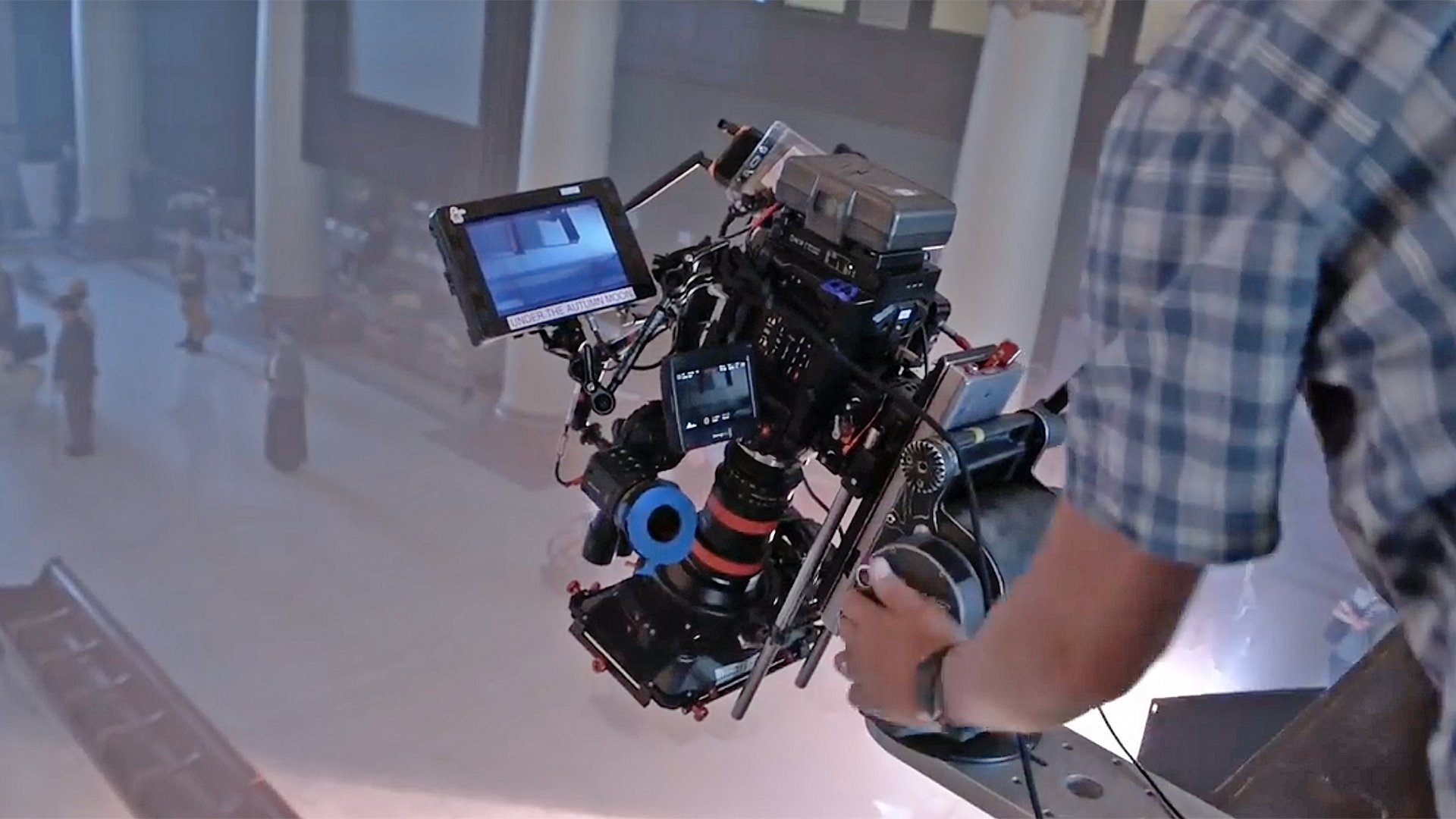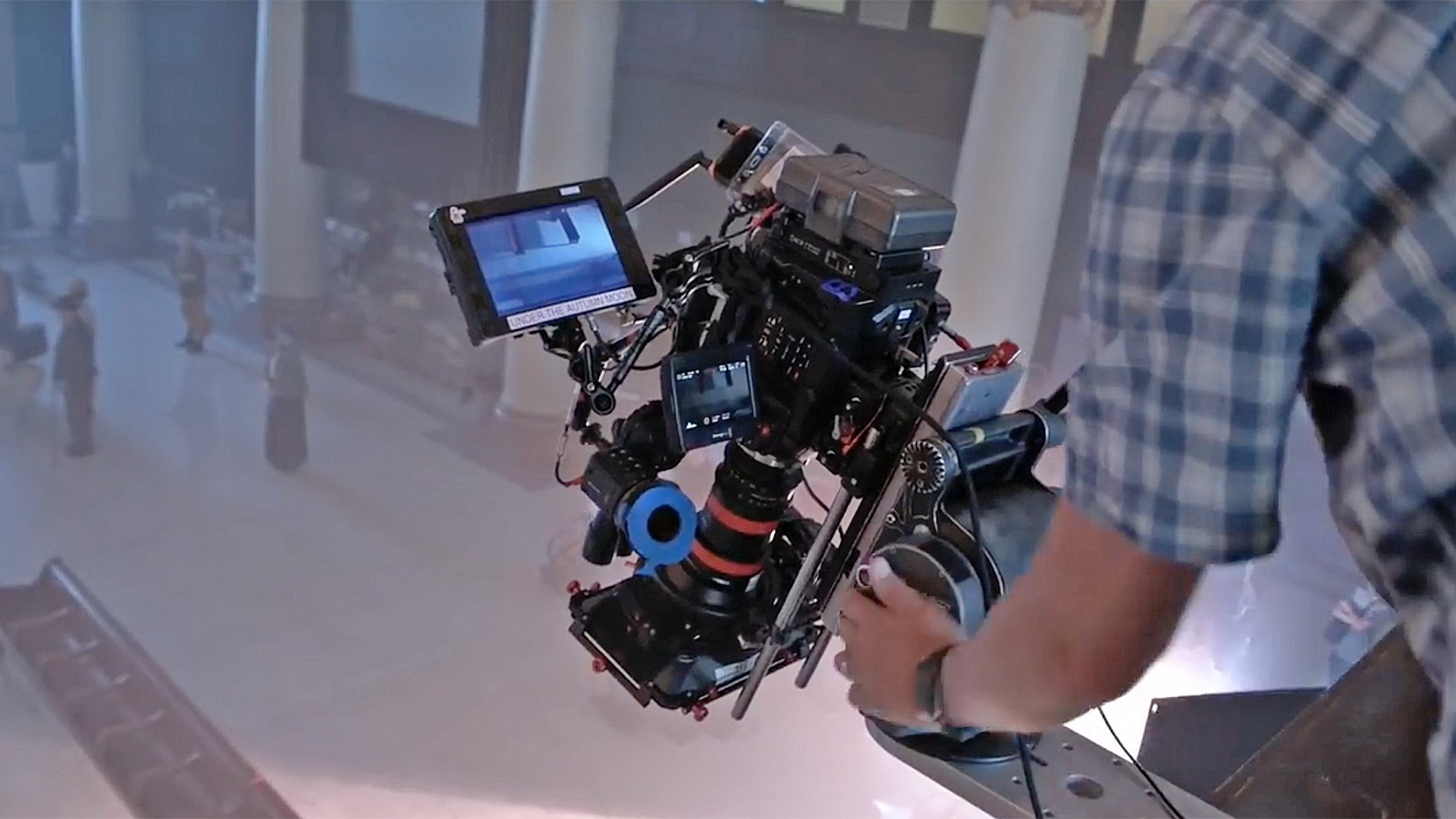

We recently featured "STAND!" a feature film shot with the Blackmagic Design URSA Mini Pro. Jody Eldred tells us about his role in the film, and delves into the technical detail behind it.
Blackmagic Design’s flagship camera, the URSA Mini Pro 4.6K, has been in the marketplace for less than two years. It surprised a lot of filmmakers who didn’t have particularly high expectations for a $6,000 (U.S.) camera, especially when they were used to working with Sony F55 or F65’s, RED, and Alexas costing 10-20x as much. I mean, you get what you pay for, right?
Ask Roy H. Wagner, ASC about that.
Roy was hired to D.P. the historical musical, STAND!, shot on location in Winnipeg, Canada last summer. Having a deep heritage in film, starting as a camera assistant to Ansel Adams, mentored by Oscar-winner and multiple-nominee Harry Stradling, ASC (A Streetcar Named Desire, Guys and Dolls, Gypsy, My Fair Lady, Funny Girl, Hello, Dolly! ), himself an acclaimed two-time Emmy-winning D.P. and director in TV and features (Beauty and the Beast, Quantum Leap, Drop Zone, Party of Five, Elementary, Ray Donovan, House, CSI ), Roy had a lot of rich experience to draw upon.
Having been one of the first (if not the first) to shoot a dramatic series on tape as opposed to film (Pasadena), creatively executing it in a manner which persuaded network execs that it was time to move away from costly film, Roy has always prided himself as a risk-taker—but doing so wisely, not recklessly, never compromising his artistic vision nor his employer’s investment.
Testing
When the URSA Mini 4.6K was introduced, I was performing some testing for Blackmagic (having tested a dozen or more cameras for Sony, including the F55 and later the Venice.) Roy asked me my thoughts on the camera and asked me to conduct some exposure tests to see how it performed in terms of dynamic range -- especially holding details in the highlights -- and how it rendered skin tones.
He viewed the tests in the 4K theater at Roush Media (my colorist) in Burbank, CA and called me right away. “I am astonished.”
He got his hands on an URSA Mini Pro 4.6K shortly thereafter, and a year later when the opportunity to shoot STAND! arose, he knew the technology he wanted to employ.
It was a godsend for Blackmagic of course… having a celebrated D.P. like Roy using their camera on a significant feature film with a very textured look and feel is something every camera manufacturer dreams of -- especially when they are the new kid on the block. Blackmagic Design CEO and Founder Grant Petty was most happy to hear this!
The production procured five USRA Mini Pro 4.6K cameras with PL mounts, 4K Video Assist (7” onboard monitor/recorders), the DaVinci Resolve Mini panel for the colorist, and a Micro panel for the DIT.
Roy quickly discovered there were no crew available in Winnipeg who had any experience with this new camera system. As I had significant stick-time with it, he asked me to serve as the “technology consultant”, to train and “evangelize” the crew as to the Blackmagic infrastructure we’d be working within, and ensure they were exercising best practices every day: performing sensor calibration to reduce likelihood of noise in the blacks and FPN, making sure the correct LUT was loaded and being utilized, how to operate the camera and its menu, and maximize its capabilities.
The look
Roy had two looks he was going for in what he described as a “German expressionism” feel: a slate-grey/bluish LUT he named “Tenement” which represented the cold, harsh conditions of the underpaid workers who were no more than cogs in a machine, and a richer, golden LUT, “Elegant”, representing the lives of the wealthy sweatshop owners and politicians who lived in mansions and had no regard for the immigrants slaving under them. “Tenement” was shot at 3200K and often used daylight sources, while the warm “Elegant” was shot at 5600K using mostly tungsten sources.
There was plenty of mixed light, 5600K and 3200K simultaneously, opposing colors of red and blue -- something some D.P.s had suggested the URSA Mini Pro 4.6K could not handle. The results proved them completely wrong.
And some D.P.s also warned the camera could not handle low light nor super-high contrast. Shot at the native 800 ISO the entire feature, sometimes exposing for super-bright highlights, sometimes exposing for shadows, Roy also proved that to be a myth.
STAND! was shot with three URSA Mini Pro 4.6K cameras, with the others used for BTS, and one as a spare body if needed (it wasn’t.)
The crew immediately adapted to the camera system, and was even allowed to borrow the cameras over the weekends to test them and shoot their own short films. (One AC already bought her own camera, as has the post-production facility.)
The rest really is history… the story of a general strike 100 years ago that changed the face of labor and unions in North America will be released fall 2019, captured with a camera system that shifted several paradigms, and was extremely labor-friendly, to say the least…
Tags: Production


Comments